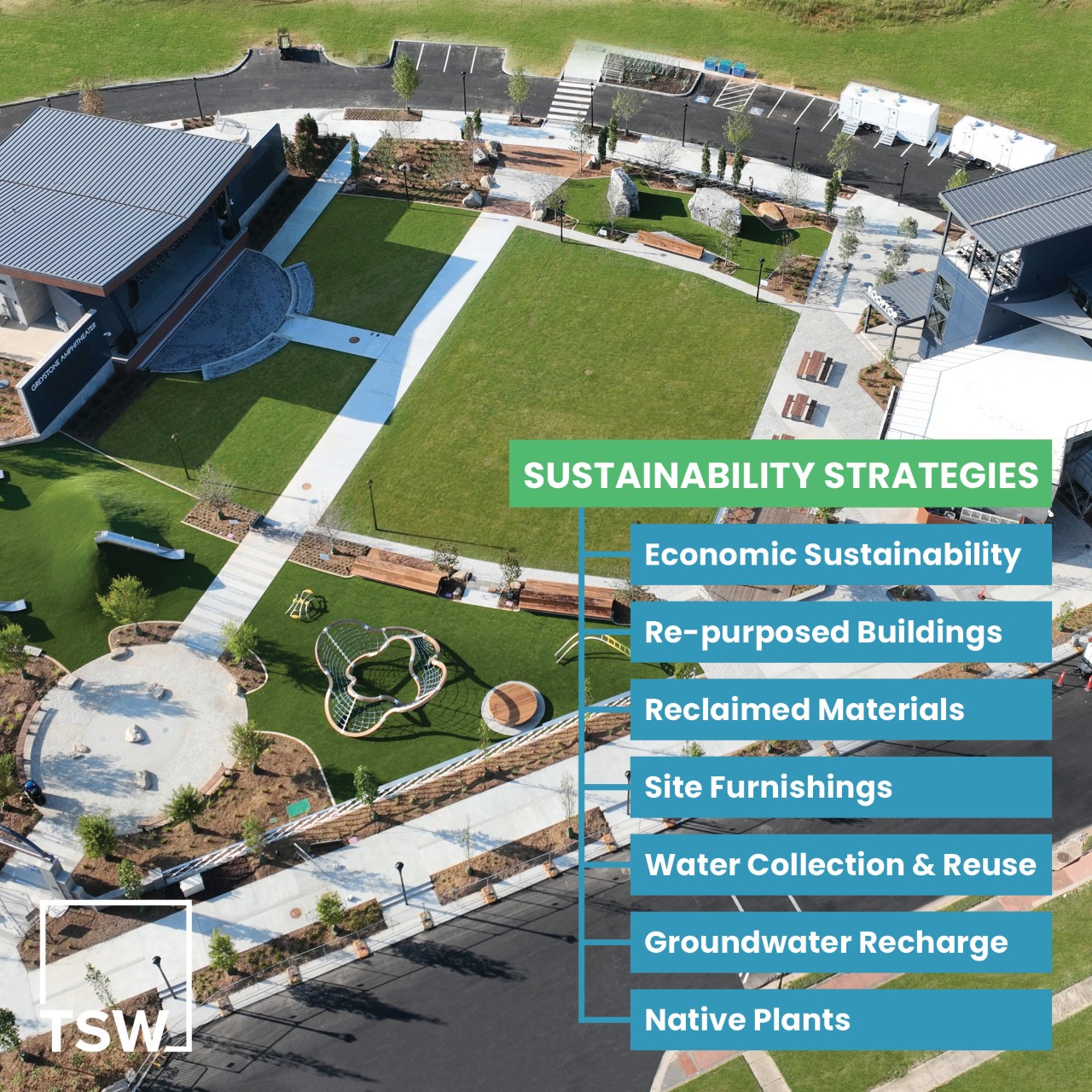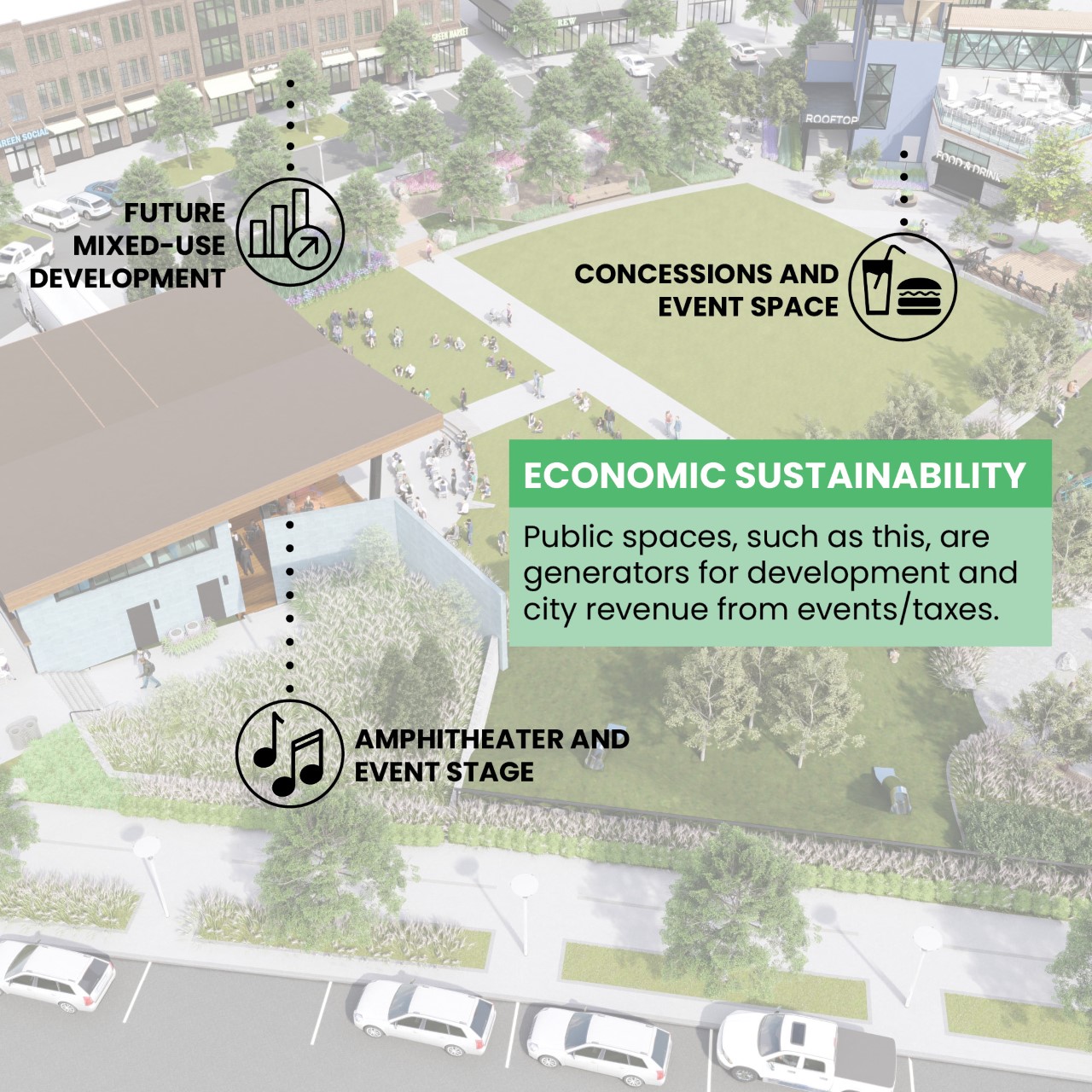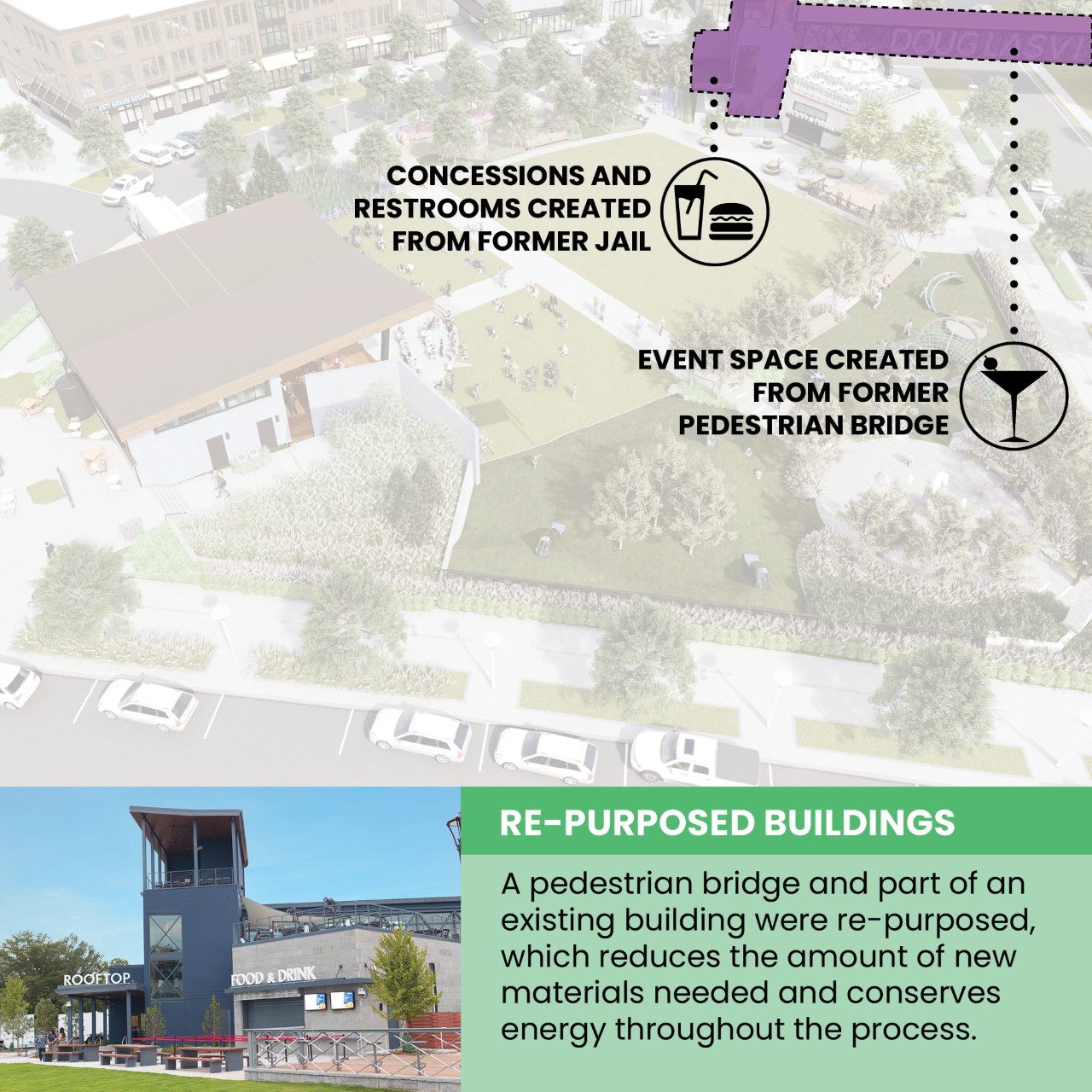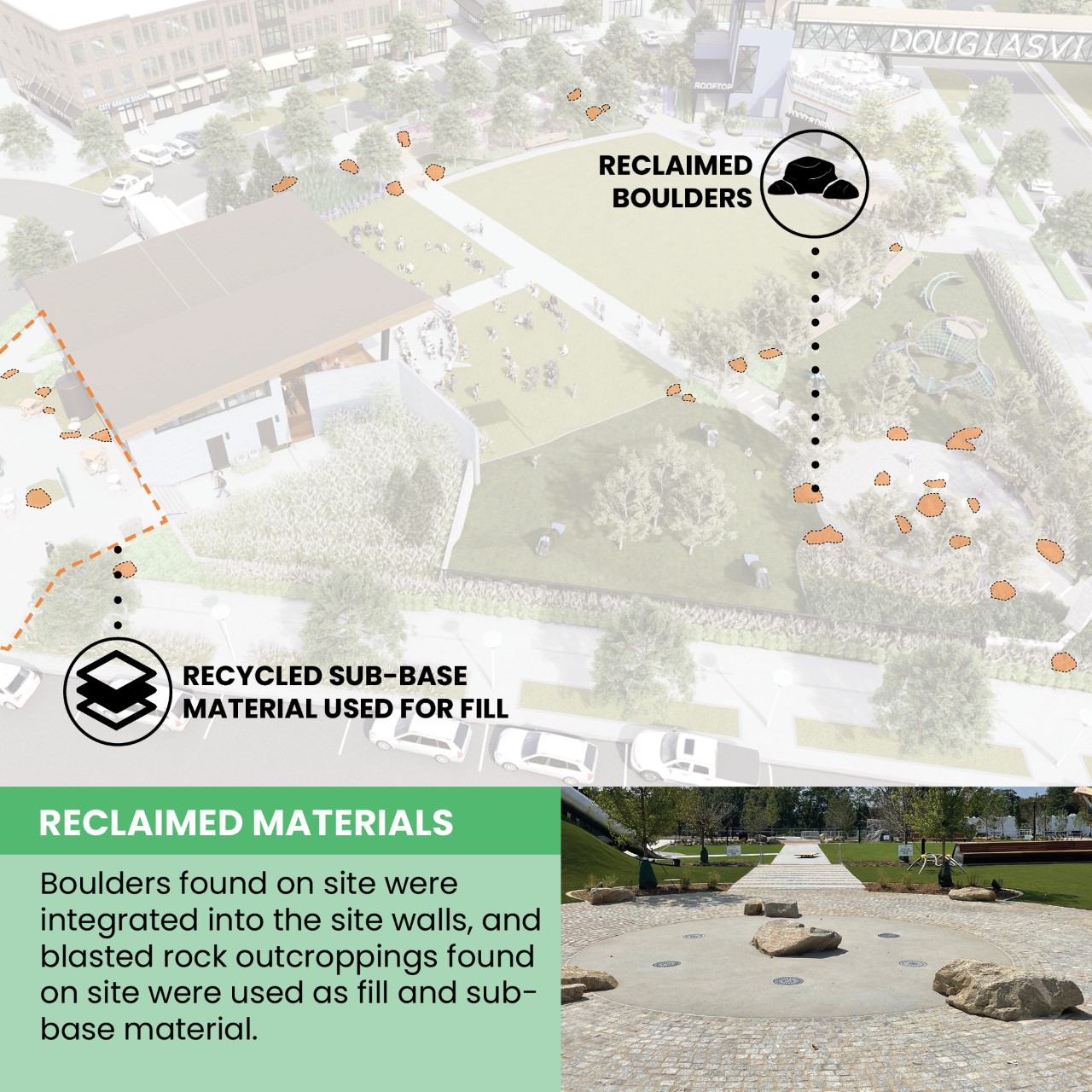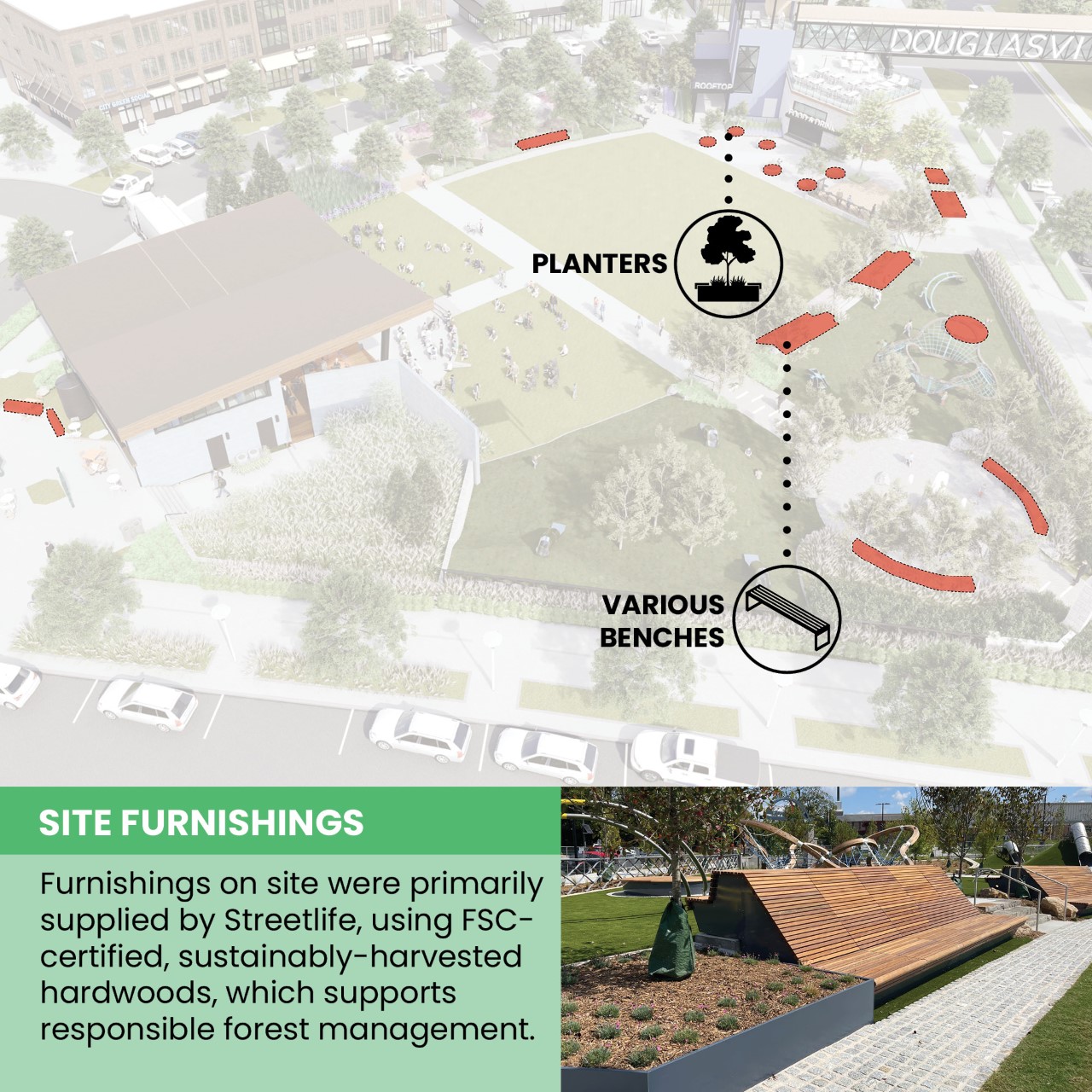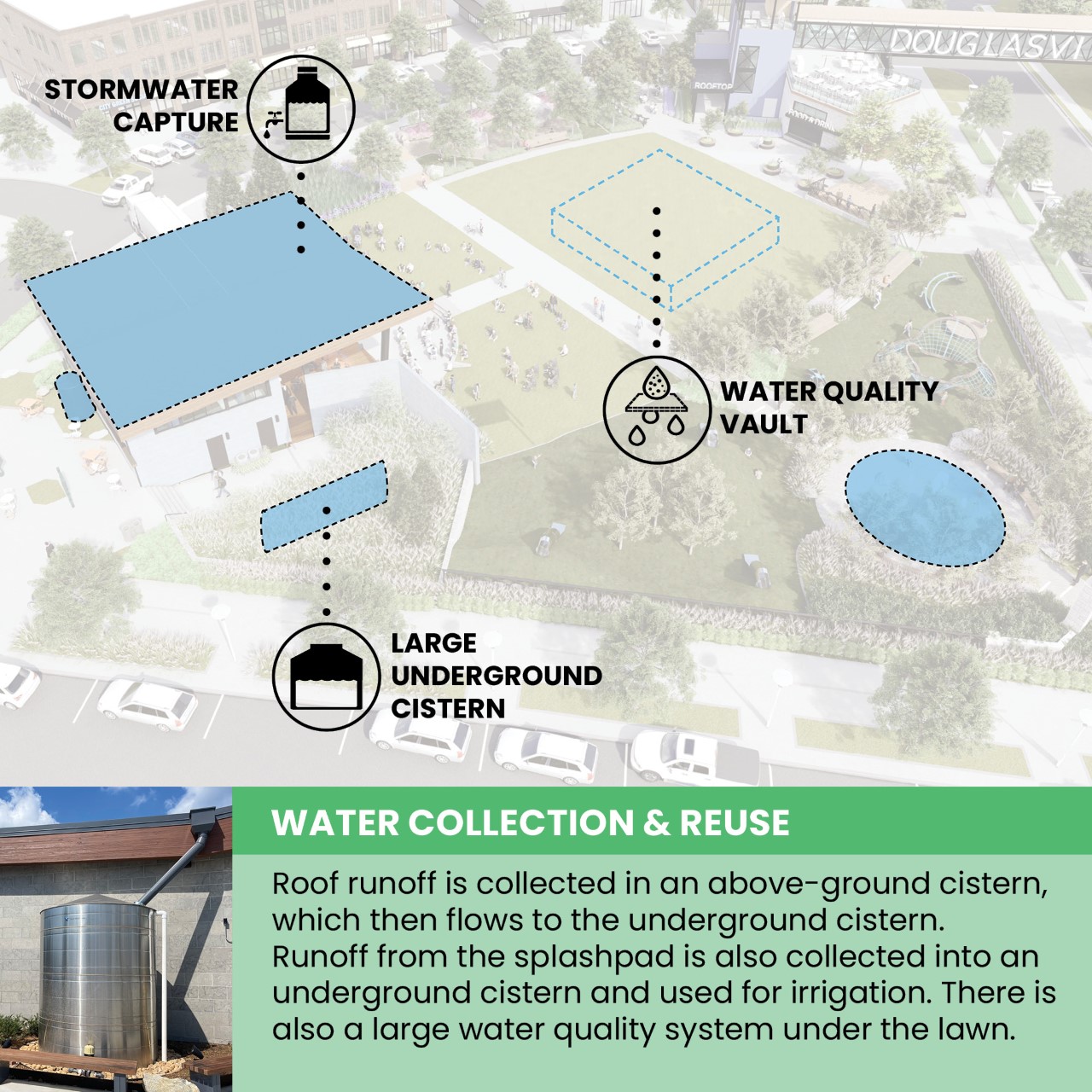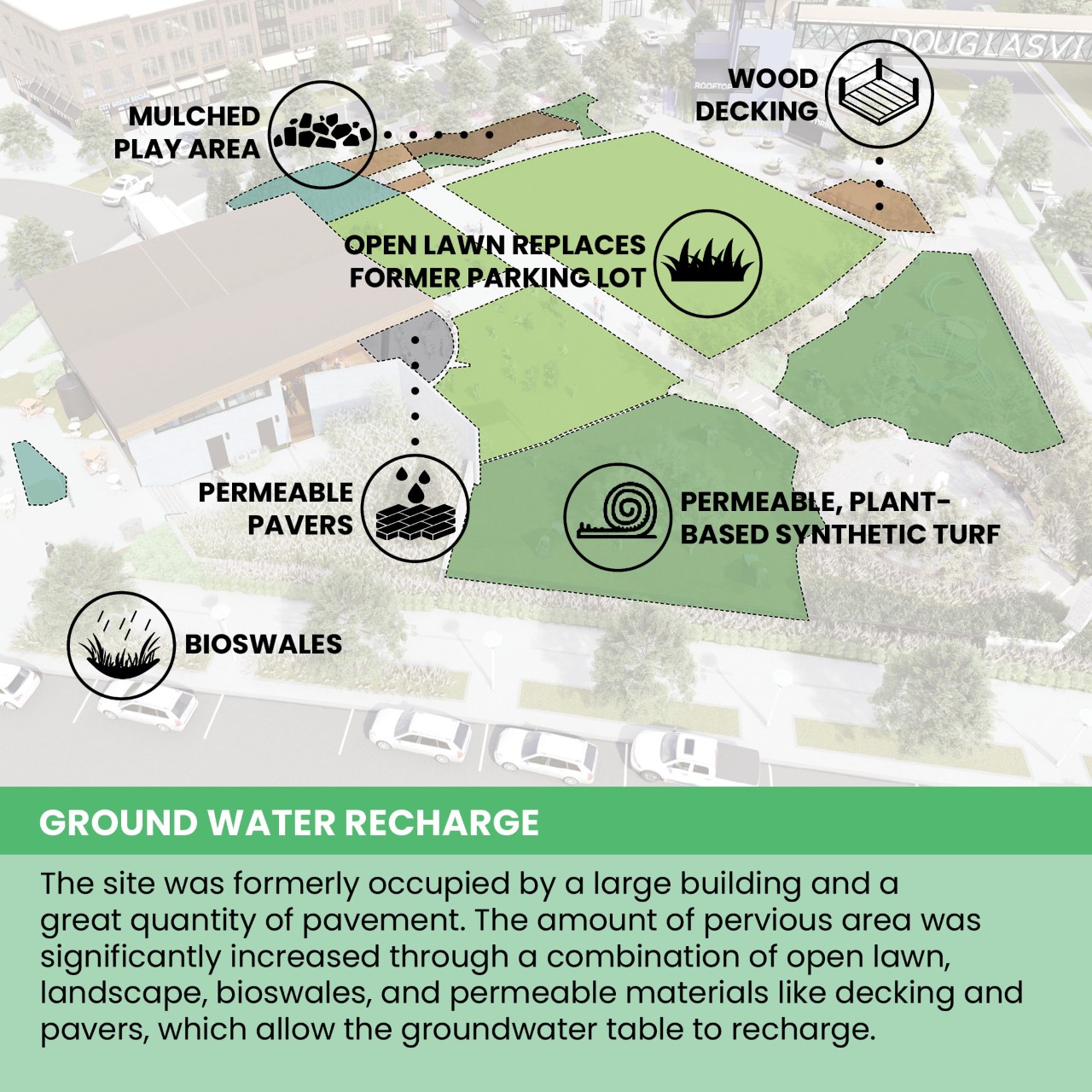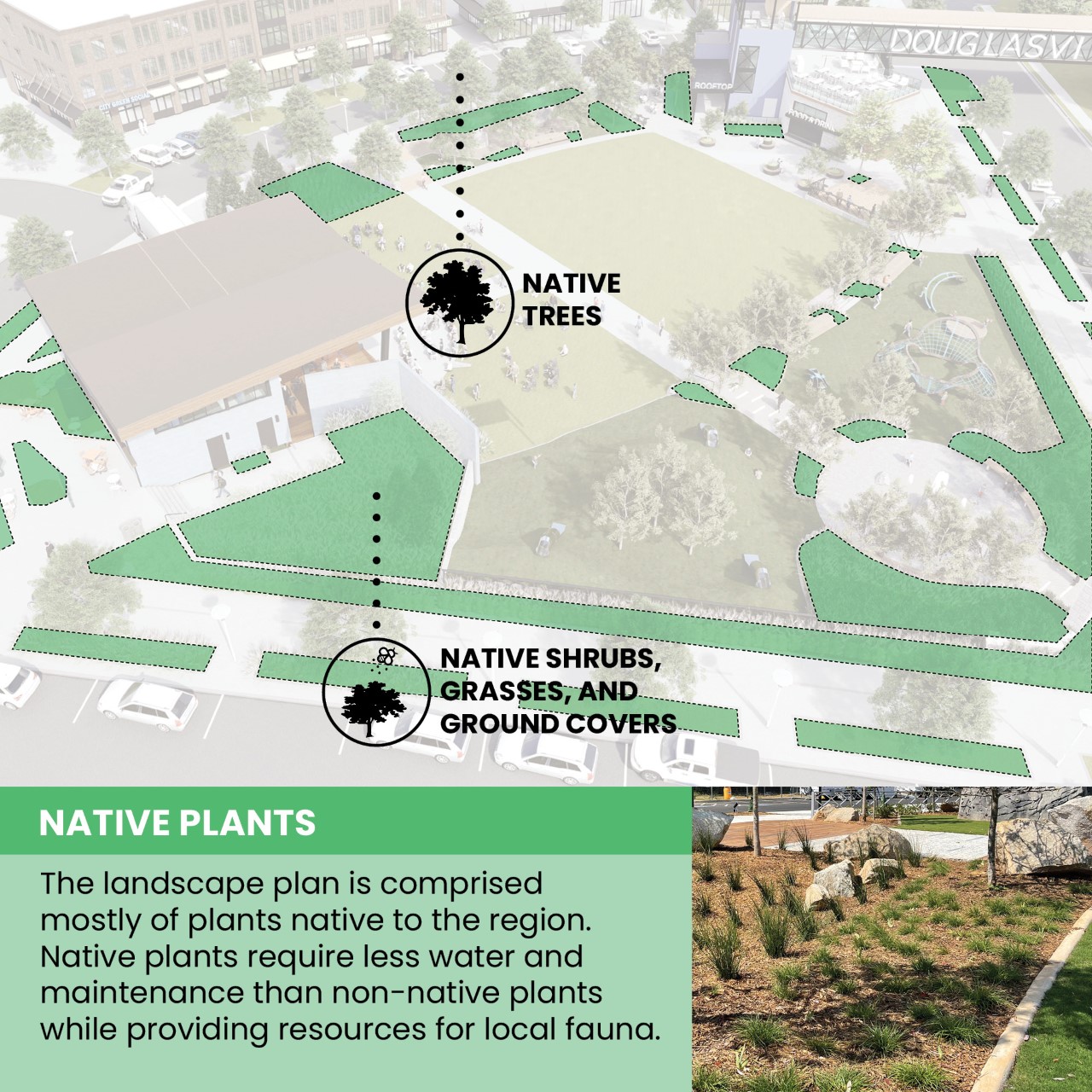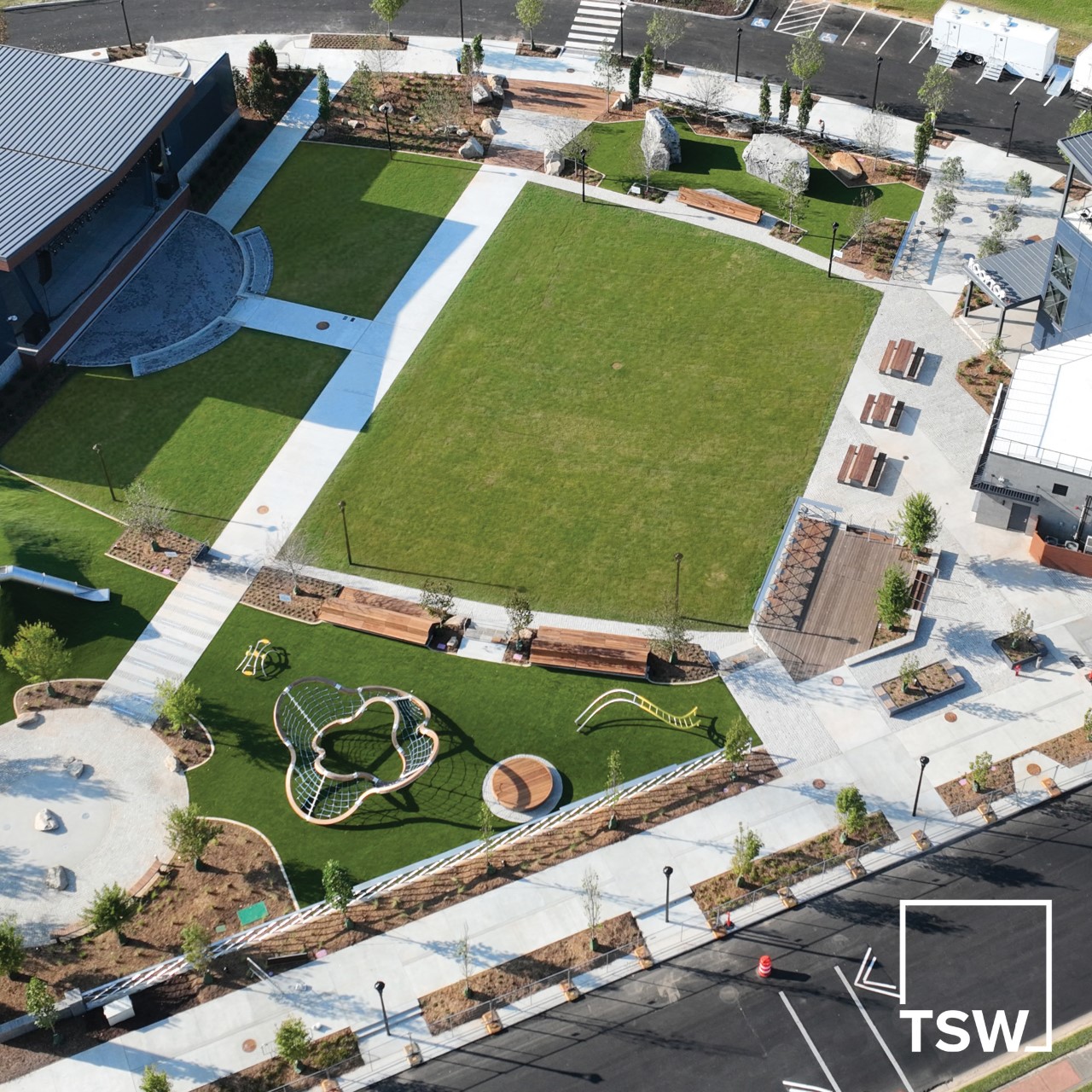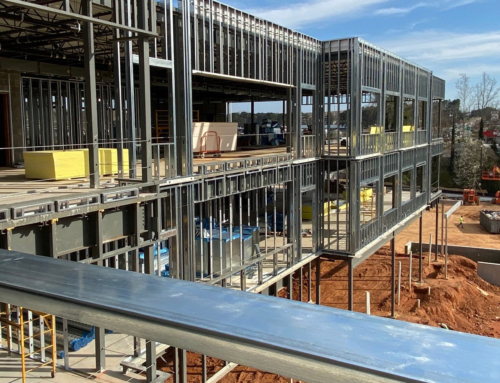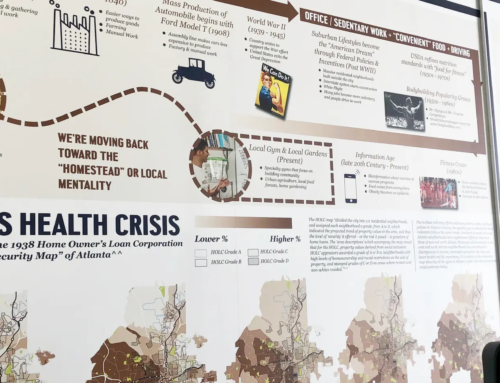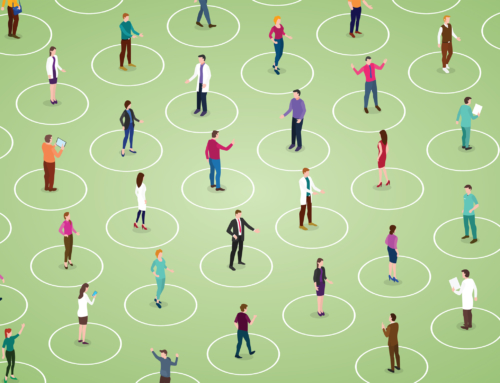Sustainability Strategies
ECONOMIC SUSTAINABILITY
Public spaces, such as this one, serve as powerful generators for economic development and increased city revenue, not only by attracting private investment and revitalizing surrounding areas, but also through income generated by public events, tourism, and property and sales taxes.
A pedestrian bridge and a portion of an existing building were thoughtfully re-purposed, significantly reducing the amount of new construction materials required, minimizing construction waste, and conserving energy throughout both the demolition and building processes, while also preserving elements of the site’s original character.
RE-PURPOSED BUILDINGS
RECLAIMED MATERIALS
Boulders discovered on site were carefully integrated into the construction of site walls, adding natural character and reducing the need for imported materials, while rock outcroppings unearthed during blasting operations were efficiently repurposed as fill and sub-base material, minimizing waste and lowering overall environmental impact and transportation costs.
Site furnishings were primarily provided by Streetlife, a manufacturer known for its commitment to sustainable design, utilizing FSC-certified, sustainably-harvested hardwoods that not only ensure material durability and aesthetic quality, but also support global efforts toward responsible forest management, habitat preservation, and long-term ecological balance.
SITE FURNISHINGS
WATER COLLECTION & REUSE
Roof runoff is first collected in an above-ground cistern, which serves as a visible and educational water feature before channeling the water into a larger underground cistern for long-term storage. Similarly, runoff from the splashpad is captured and directed into the underground cistern system, where it is stored and reused for landscape irrigation, significantly reducing potable water demand. In addition, a large, integrated water quality system located beneath the lawn filters and treats stormwater on site, promoting groundwater recharge and improving overall environmental performance.
The site was previously dominated by a large building footprint and extensive areas of impervious pavement, which severely limited natural water infiltration and contributed to runoff. As part of the redevelopment, the design significantly increased the amount of pervious surface area by introducing a thoughtful mix of open lawn, native landscaping, bioswales, and permeable materials such as decking and pavers. These strategies not only improve site aesthetics and functionality but also play a critical role in managing stormwater, reducing surface runoff, and allowing rainwater to percolate into the soil, thereby supporting the natural recharge of the groundwater table and enhancing the site’s overall ecological resilience.
GROUND WATER RECHARGE
NATIVE PLANTS
The landscape plan is predominantly composed of plants native to the region, carefully selected for their adaptability to the local climate and soil conditions. Using native plants not only reduces the need for supplemental watering and ongoing maintenance compared to non-native species but also supports biodiversity by providing essential habitat and food sources for local wildlife, including pollinators, birds, and beneficial insects. This approach promotes a healthier, more sustainable ecosystem and contributes to the long-term resilience of the landscape.

